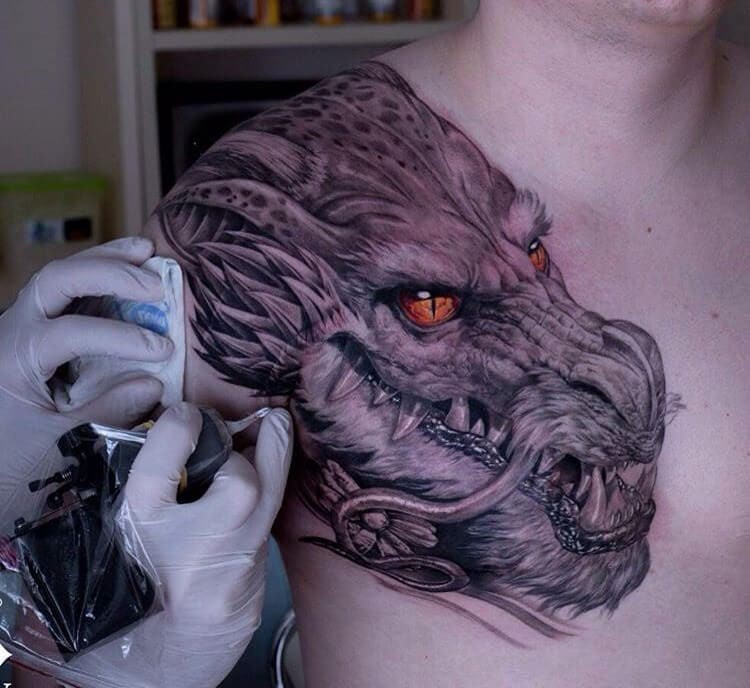
Dragon Tattoos: History and Folklore
Who isn?t fascinated by dragons?
Dragons hold our attention because, in addition to being powerful beyond imagination, these breathtaking creatures represent freedom and chaos in equal measure.
Ever-popular in modern times, dragon history actually goes way back! For millennia, cultures have revered and feared dragons. They?re a staple in East Asian cultures and are prominent in European mythology as well. Ancient civilizations such as Egyptian and Babylonian ones also held the dragon in high regard.
Get a free consultation now!
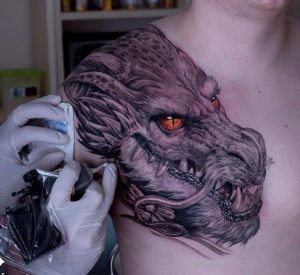
Middle Eastern Dragons
Middle Eastern depictions of dragons painted them as enormous creatures with horrifying power and unpredictable natures. The dragon was a symbol of Marduk, the supreme god and guardian of Babylon and the Assyrian religion. He was usually depicted with ?the head and tail of a serpent, the body and forelegs of a lion and the hind legs of a falcon, and a forked tongue.?
In ancient Egypt, the dragons gods were extremely powerful and destructive forces, usually depicted as serpents. Some, such as Apep the sea-serpent and Denwen the fire serpent were terrifying and were thwarted by the sun god Ra and the Egyptian King, while others were forces of protective energy, such as Wadjet the guardian serpent. Ouroboros, the serpent depicted with its tail in its mouth, was a symbol of renewal and eternity. The Uraeus was a symbol of supreme authority and was worn in the Egyptian royal headdress.
The mythical king of Babylon, Azhi Dahaka was a dragon with ?three heads, six eyes, and three pairs of fangs?. There are many different versions to the story of this dragon, but over time he came to be associated with evil and is considered to be a servant of darkness. He was slain by the Persian hero, Feridun, who then imprisoned him in Mount Demavend, thus beginning the heroic tales of brave warriors who slay dragons!
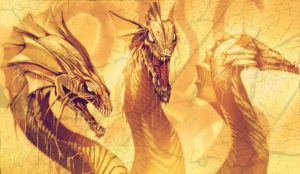
The three-headed dragon seems oddly familiar?
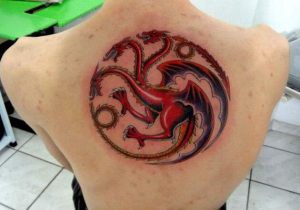
Asian Dragons
In Asia, dragons represent balance and are thought to be ?noble beasts? that offer wisdom and protection. The dragon is depicted differently in different parts of East Asia. For instance, the Korean dragon has five claws, while the Chinese dragon has four claws and a beard of flame and represents balance and the forces of both good and evil. The Japanese dragon is slender, without wings, and has only three claws and represents freedom and good luck. Across all depictions, the dragon is thought to have supernatural powers and great wisdom.

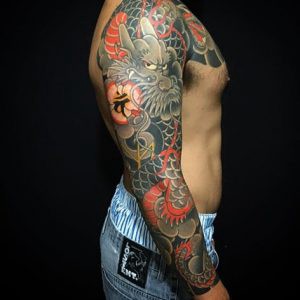
Chinese symbolism considers dragons to be a symbol of ?potent and auspicious power?, and there are numerous dragons, each with unique gifts and supernatural powers including the ability to control different elements. The Azure Dragon represents the East, the season of spring, and the element of wood, and is one of the five forms of the highest deity making it an immortal being. As the masculine yang energy, it is in constant conflict and balance with the feminine yin energy of the White Tiger.
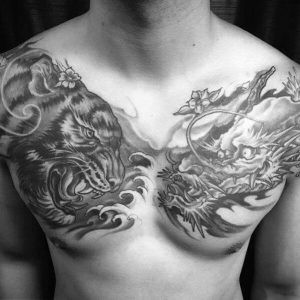
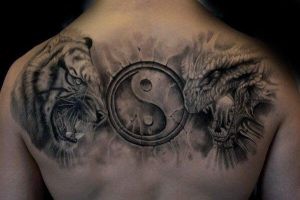
Read: Tiger Tattoos and their Meanings
In imperial China, the dragon was used by the Emperor to represent imperial strength. Dragons, thus, came to be associated with royalty and achievement. Even in modern China, those who excel in any field are considered ?dragons?.
European Dragons
In European mythology, much of which traces back to ancient Middle Eastern tales, dragons are thought of as either dark, evil forces and depicted as greedy creatures that steal and hoard gold and precious jewels or as gods and beings of great power and wisdom. Fantasy and folklore both tell tales of valiant warriors who slay the dragon and reap the rewards and glory.
Celtic Dragons
Celtic symbolism views dragons more positively. Dragons are thought of as rulers, usually depicted with crowns, around thrones, and often side-by-side with Celtic gods. They are depicted with wings like bats and can have either smooth or barbed tails and tongues.
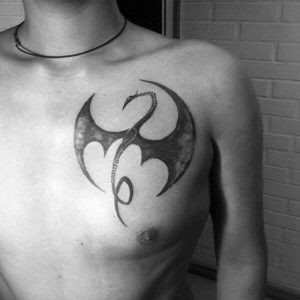
Druids believed that the lands were affected by the dragons ? the path of the dragon determined the flow of all life, and where the dragon stopped to rest would prosper and become more powerful than all the lands around it.
The Red Dragon is the official emblem of Wales, derived from the Great Red Serpent and representing the pagan god Dewi. The red dragon is a symbol of power and wisdom among leaders. King Arthur was one of the first leaders to be associated with the red dragon, which he boldly featured on his helmet. Of the Celtic dragons, Master Stoorworm is one of the most prominent as the one who ate too much and whose yawns disrupted the local town. After a young boy slew him his teeth fell out to form the islands and his body curled up and became Iceland.
Celtic dragons are often drawn with their tails in their mouth, representing the cyclical nature of all life as well as immortality ? much like the Egyptian god Ouroboros. These drawings are also similar to other Celtic knotwork symbols.
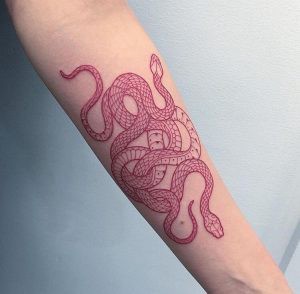
After Christianity arrived in these regions, the dragons shifted away from being symbols of power and wisdom to being symbols of strife and infertility. They were thought of as creatures of destruction that laid waste to lands and prevented growth. Over time, it became a symbol of the Devil.
Fantasy Dragons
Modern Western perceptions of dragons have changed over time. While most depictions still depict dragons as terrifying creatures with unfathomable power, some shows like Game of Thrones also depict the power of dragons as something to be desired and portray them as ?children? of a queen and loyal mounts to their rider, dragons. Whether you fear them or love them, fantasy dragons make for stunning tattoos!
Earlier animated films, such as Disney?s Mulan also changed up the portrayal of dragons by featuring an underpowered dragon named Mushu who served as the film?s comic relief. A fan-favourite, he also became quite popular as a tattoo design!
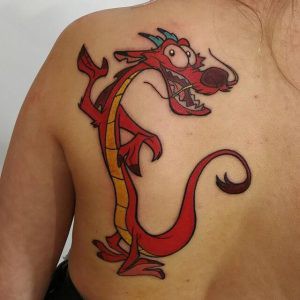
Dragon Tattoos: Meaning & Symbolism
With all its history and various symbolisms, one might wonder ? what does a dragon tattoo truly represent? For many, the dragon is a symbol of absolute power. For others, the dragon is an auspicious symbol and a bringer of goodwill. For some, the dragon means destruction and evil.
Dragons and Freedom
But the dragon has another meaning ? independence. Dragons are often lone creatures who enjoy their solitude. They are thought to be highly intelligent and unbound, able to roam as they please. Not even death can command a dragon! This makes the dragon a true symbol of freedom.
Dragon Colours and their Meanings
An interesting thing about dragon tattoos is that the colour of the dragon has a meaning corresponding to the East Asian mythological dragons. Here are some common ones:
- Black represents wisdom
- Green represents life
- Blue represents compassion and forgiveness ? and sometimes even laziness!
- Yellow represents helpfulness, as well as being self-centred
- Gold represents kindness
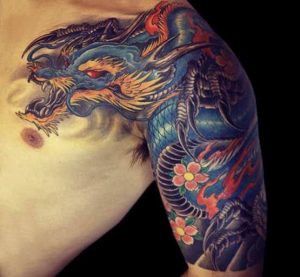
Dragon Tattoo Designs and Inspiration
And another great thing about dragon tattoos is how easy it is to adapt them to suit different designs and compositions!
East Asian Dragon Tattoos
Chinese and Japanese dragons are the most popular of the East Asian ones and are frequently features in the traditional tattoo styles of these regions. These styles are extremely colourful and vibrant, usually incorporating elements like wind and water in the design and adding floral patterns to create some stunning tattoos!
East Asian dragons can also be adapted to different styles of tattooing.
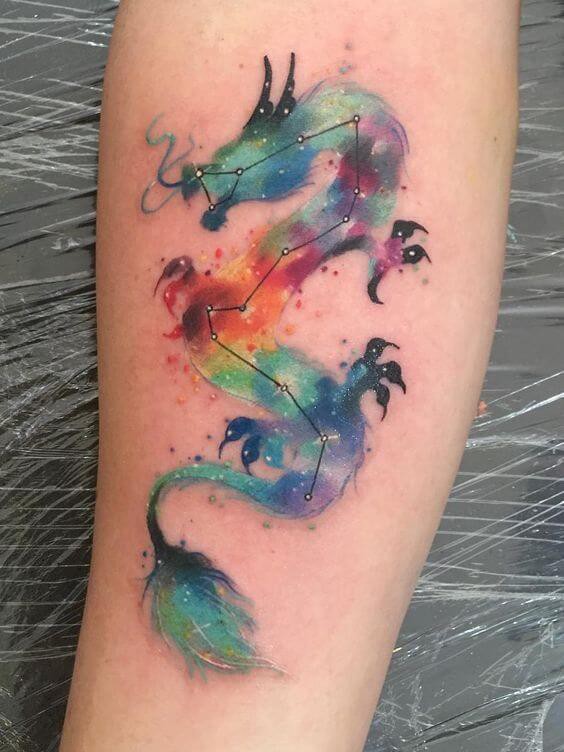
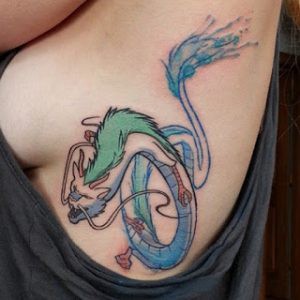

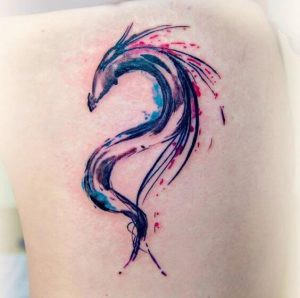
European Dragon Tattoos
Celtic dragons are the inspiration for most dragon depictions in from Europe. These designs are also adapted for American designs for dragons. They feature hyperrealistic features including very detailed and vivid scales and barbed tails, razor-sharp claws and teeth, and bat wings. Dragon tattoos using this design can be extremely detailed or very minimalist ? you get to choose!
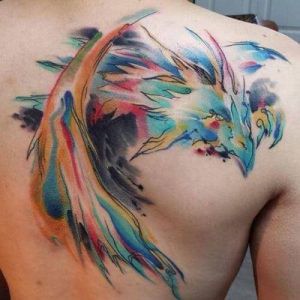
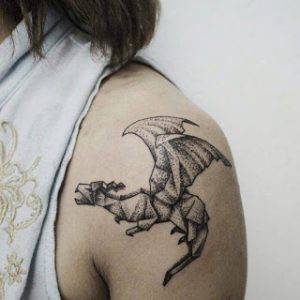
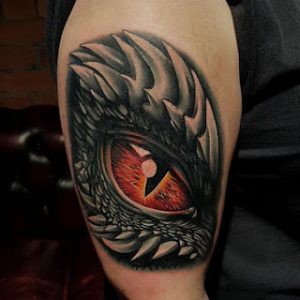
* * *
Have you fallen in love with the mighty, majestic dragon? Does the symbolism of power, wisdom, courage, and nobility make you want to get this gorgeous and terrifying creature immortalized in ink? Head on over to jhaiho.com and book your tattoo appointment today!
Be sure to follow us on Instagram for more tattoo inspiration!

